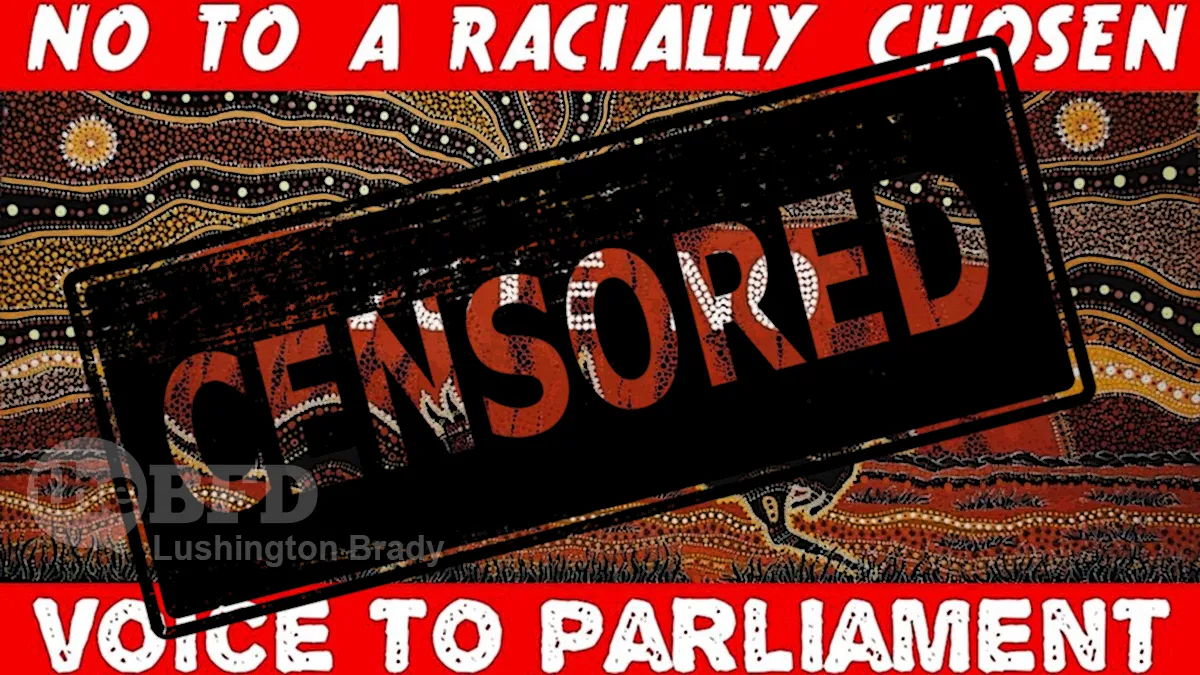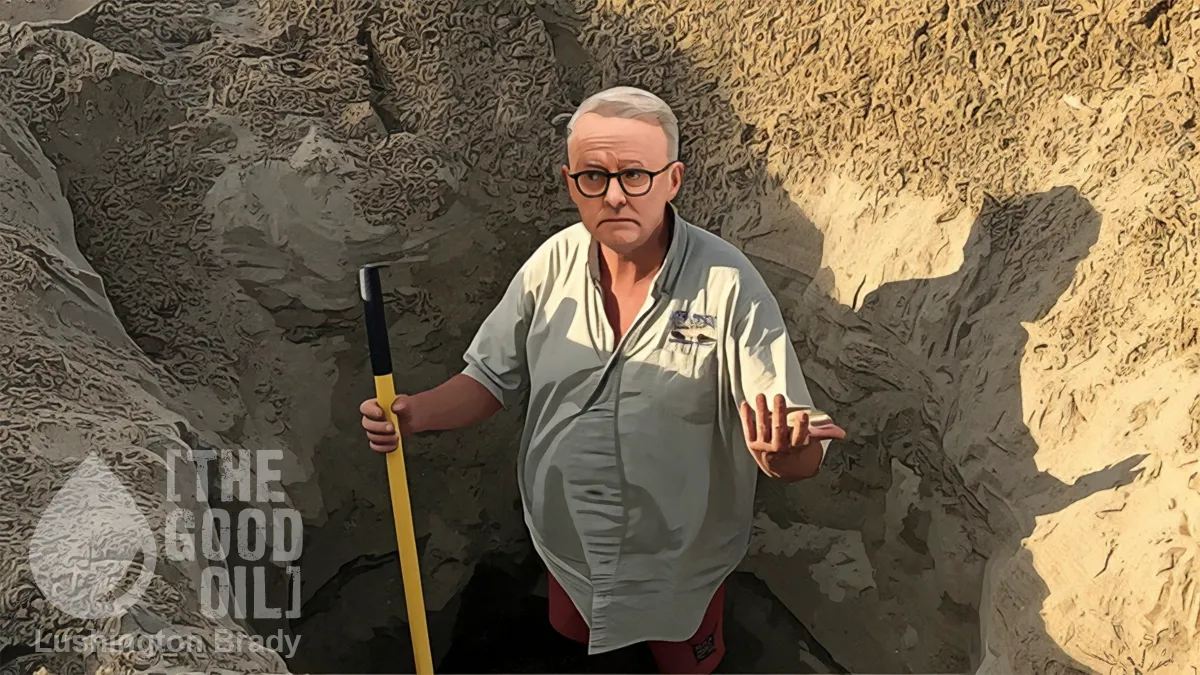Table of Contents
“When you tear out a man’s tongue,” George R R Martin wrote in A Clash of Kings, “you are not proving him a liar: you’re only telling the world that you fear what he might say.” When governments, bureaucrats and Big Tech conspire to silence people online, it’s not because of “misinformation”: it’s because these elites are afraid of what ordinary people are saying.
And when elites are afraid of what you say, then you can be very sure that what they say is very, very bad indeed.
There are many reasons to vote against the voice but here are two more. First, the fact that Anthony Albanese is not across the detail of the change to our Constitution and system of government that he’s proposing; and, second, in shades of Brave New World, Big Tech’s increasing censorship of just one side of this national debate.
When a prime minister claims that voters are falling for conspiracy theories, you know he’s getting desperate, but to admit he hasn’t bothered to actually read any of the Uluru Statement beyond the first page – despite committing his government to implement it in full – says a lot about the sort of leader he is.
Unlike, say, John Howard, who could reel off facts and figures in almost mind-numbing detail at the drop of a hat, Albanese is not exactly a details guy. We saw that during the election campaign, when he constantly fumbled economic statistics. Now, we learn that probably the reason he refuses to let Australians in on the details of his “Indigenous Voice” is because he hasn’t the foggiest himself.
Time and again, Albanese, or his Indigenous Affairs Minister Linda Burney, have made forthright claims about the “Voice” and its foundational document the Uluru Statement, only to be completely contradicted by his own Yes campaign leaders. Or, in this case, the Uluru Statement itself.
He continued to deny that the Uluru Statement had anything to do with treaty and reparations, even though “Voice, Treaty, Truth” has always been the Uluru activists’ mantra or, to directly quote the document, “the culmination of our agenda” […]
[Then] there was this bombshell: “I haven’t read it.”
That’s right: we have a PM who is determined to change the Australian Constitution as demanded by a document he admits he’s never read in full.
A fortnight back in this column, I pointed out that the Uluru Statement from the Heart is not just the one-page poster, which the Prime Minister admits he has got up on his wall. It’s actually a 26-page document that, among other things, calls for reparations to be paid by the Australian taxpayer to Aboriginal people, seeking “a percentage of GDP”, to atone for the “invasion” that began in 1788 and which constitutes their “fundamental grievance” against the Crown.
Despite the panicked denials of the PM and the Yes campaign, that the Uluru Statement is 26 pages, not one, the facts are there for all to see.
My evidence for this was a previously unnoticed 112-page Freedom of Information release from the National Indigenous Australians Agency, which comprised records from the regional meetings that led to the 2017 Uluru Convention, and culminated in a 26-page document entitled “Uluru Statement from the Heart”.
If that’s not enough, we have the words of prominent Yes campaigners themselves – the same people now trying to deny their own words.
One of its principal authors, Megan Davis, had declared on at least six separate occasions, prior to last week, that it is more than just a one-page document. Pat Anderson – who co-chaired the Referendum Council which published 16 pages of extracts from the Uluru Statement – had also said that it was more than one page.
At the Sydney Peace Prize last year, not only did Davis say the Uluru statement was “actually 18 pages”, she also said it was “very important” for Australians to read all of it. Previously, she’d written in this newspaper that “the Uluru Statement from the Heart is occasionally mistaken as merely a one-page document when … in totality (it’s) closer to 18 pages and includes … a lengthy narrative called Our Story”.
As is the fashion now for elites caught out, the Yes campaign has responded by lying about “misinformation”, and trying to tear out the digital tongues of truth-speakers.
[The PM] told parliament last week that my revelations were a “conspiracy worthy of QAnon” […]
On August 3, Sky News posted my night’s editorial on Facebook, substantiating the argument that the Uluru Statement is a lot more than just the PM’s one-page poster. A week later, the Big Tech censors blanked it out, plastering this statement where the video used to be – “False information. Checked by independent fact-checkers” – and a link to a document from a hardly unbiased partnership between the RMIT and the ABC.
Spoiler alert: the “fact-checkers” are lying.
This is not the first time Big Tech has censored arguments against the voice. Facebook has previously blocked an Institute of Public Affairs discussion featuring senators Jacinta Price and James McGrath. It’s also blocked a post from Advance Australia stating that the voice conferred “special rights” on Indigenous people, again citing RMIT-ABC fact-checkers, despite former judges making the very same point […]
So far, there’s no suggestion that Big Tech has blocked any pro-voice advocacy, notwithstanding any number of social media posts that it’s racist to vote No or false claims that the official No campaign was using AI to fake Indigenous opposition to the voice.
The Australian
Of course not. The river of censorship only ever flows in one direction: from the left.









